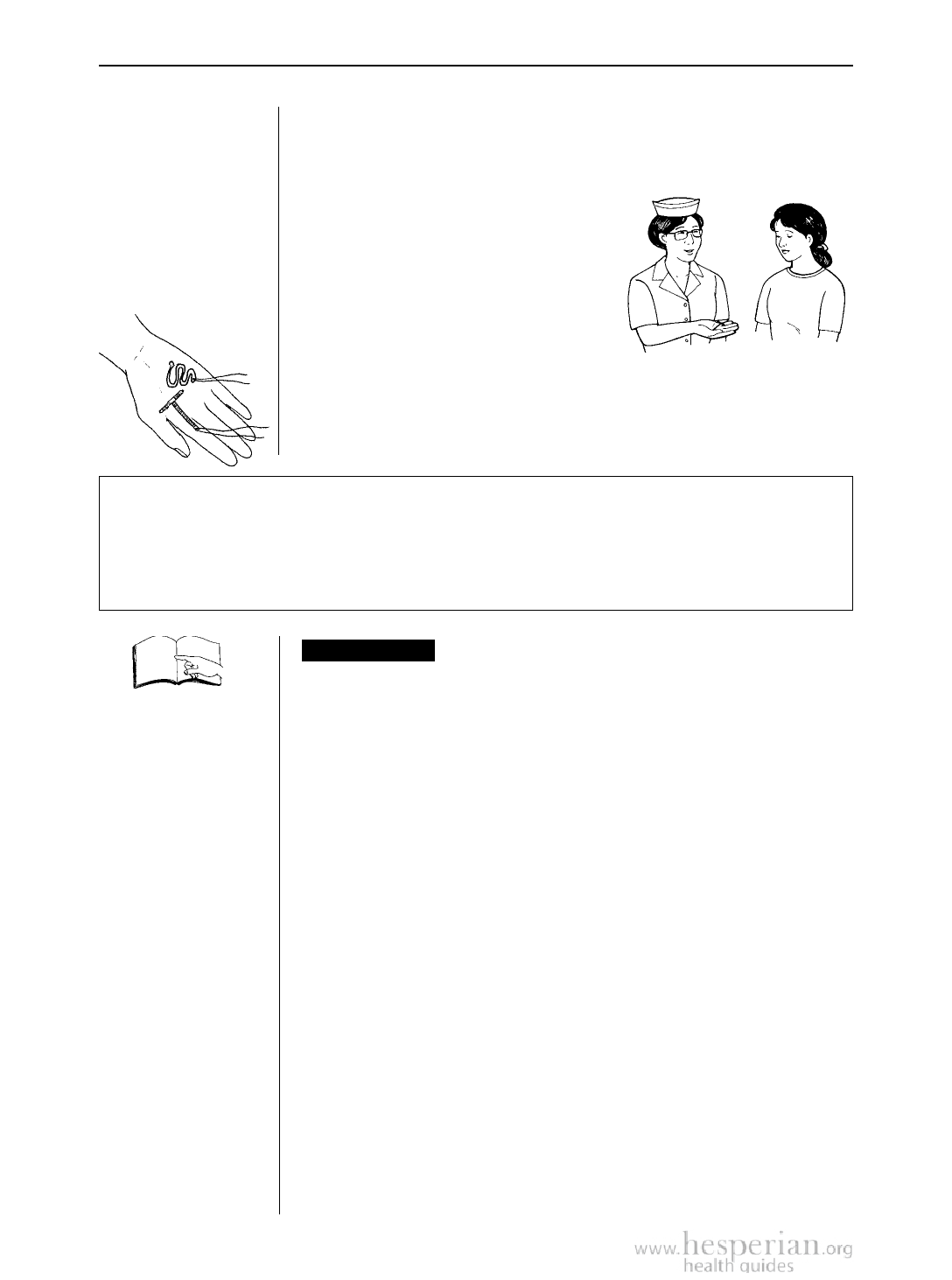
216 Family Planning
Intra-
Uterine
Devices
(Devices
that go into
the womb)
The IUD (IUCD, Copper-T)
The IUD is a small object or device that is inserted into the
womb by a specially trained health worker or midwife. Once in
the womb, the IUD prevents the
man’s sperm from fertilizing the
woman’s egg. The IUD can stay in
the womb for up to 10 or 12 years
(depending on the kind of IUD it
is) before it must be removed and
replaced. An IUD can be used
without the man knowing you are
using it (although sometimes a man can feel the strings).
The most common IUDs are made of plastic, or plastic and
copper.
Progestin IUD (Mirena, LNG IUD)
This kind of IUD also contains the hormone progestin and is available in some
countries. Progestin decreases the pain and bleeding that some women have with
the IUD. It protects against pregnancy for 5 years.
261
STIs
➤ IUDs can be used
safely by women who
are breastfeeding.
➤ Do not use an IUD
if you are unable to
get to a health center
or clinic where you
can have the IUD
removed if necessary.
IMPORTANT IUDs do not protect against STIs, including HIV.
And if a woman has an STI, the IUD can lead to more serious
complications, such as pelvic inflammatory disease (PID).
PID can lead to infertility.
Do not use an IUD if you:
• are pregnant or might be pregnant.
• have an STI or are in danger of getting an STI. (This
includes any woman who has more than one partner, or
whose partner may have other sex partners.)
• have a lot of bleeding and pain during your monthly
bleeding (a progestin IUD may be better).
• are very anemic (a progestin IUD may be better).
Wait for at least 3 months before using an IUD if you have
had an infection in your tubes or womb, or an infection after
giving birth or after having an abortion.
Common side effects:
You may have some light bleeding during the first week after
getting an IUD. Some women also have longer, heavier, and
more painful monthly bleeding, but this usually stops after the
first 3 months.
Where Women Have No Doctor 2012